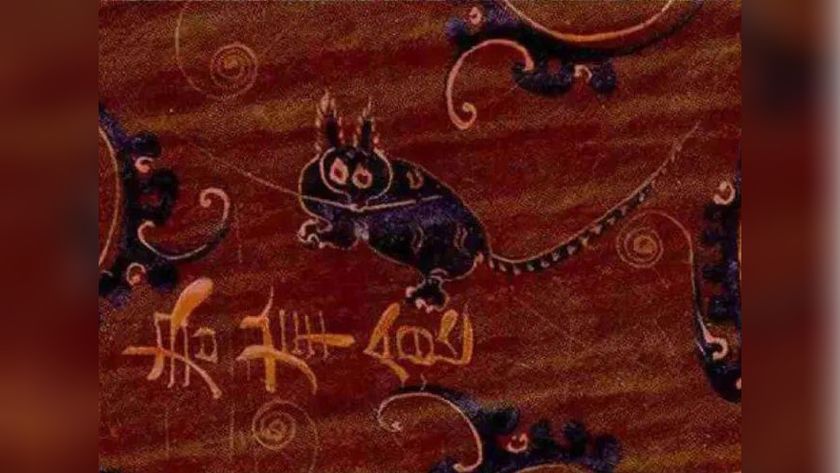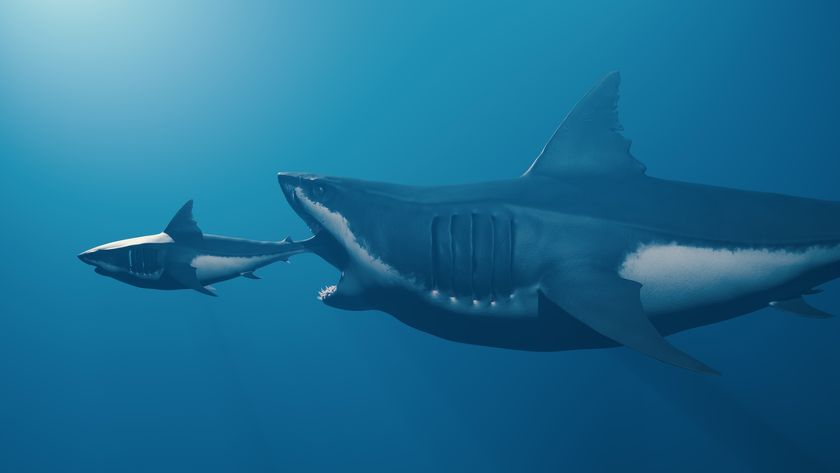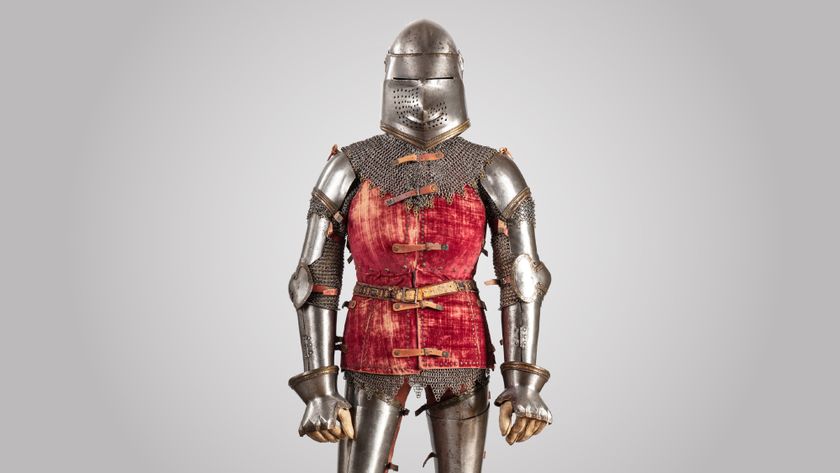
Genes May Be Key as California Chrome Aims for Racehorse History Books

This article was originally published at The Conversation. The publication contributed the article to Live Science's Expert Voices: Op-Ed & Insights.
This weekend we could see history made. The US Triple Crown of thoroughbred horse racing hasn’t been won since 1978. This spring, the racehorse California Chrome won the first two legs of the Triple Crown. He is set to run in the final race of the series, The Belmont Stakes, on June 7. If he wins, he will be the first Triple Crown winner in 36 years and only the 12th horse in history to do so.
Does California Chrome have what it takes to win the Belmont Stakes? Science might provide us with a way of setting the odds.
The Belmont Stakes is the most gruelling of the three Triple Crown races. At 2.4km, it is the longest of the three races. The two previous legs of the Triple Crown, the Kentucky Derby and the Preakness Stakes, were only 2km and 1.9km long respectively. The Belmont Stakes is the test of stamina.
Family matters
On the face of things, California Chrome originally seemed an unlikely contender. “The horse don’t know he’s no blue blood,” said Steve Coburn, one of his co-owners. Coburn was referring to the fact that the champion racer, who galloped to a relatively relaxed Kentucky Derby win at Churchill Downs on May 3, appears to be lacking the prestigious pedigree of many of his fellow competitors.
In fact, so inauspicious was California Chrome’s pedigree that his mother, Love the Chase, was purchased for the bargain price of US$8,000. California Chrome’s sire commanded only a US$2,500 stud fee – relatively low as stallion service goes. The dollar value put on his parents would imply that California Chrome does appear far from a blue blood. But looking back further into his lineage suggests otherwise.
There is good reason to think that California Chrome has what it takes to win the Triple Crown. Aside from winning all six of his last six races, including the first two legs of the Triple Crown, recent research shows that he and his thoroughbred kin all bear genes that make them born to run.
Sign up for the Live Science daily newsletter now
Get the world’s most fascinating discoveries delivered straight to your inbox.
In it for the long run
It has long been known that genetics play a key role in determining the speed of thoroughbreds. Horse breeders aim to select the best stallion, the sire, and the best mare, the dam, to produce superior offspring. Some stallions have proven to be “super sires”, producing a large crop of winning progeny.
Some sires produce offspring that are fast sprinters – winning at distances under 1.4km. Others have offspring with greater staying power, winning at distances of more than 1.8km. Geneticists take advantage of this information to identify the genes that determine whether a horse will be a sprinter or a stayer.
It turns out that one gene had greater influence in determining racing type than all others. This gene is called MSTN.
Like most genes, MSTN provides the instructions for making a specific protein. In the case of MSTN, the protein is called myostatin, which functions as a growth factor in a wide variety of animals, from horses to dogs, cattle to humans. It is secreted from skeletal muscle cells, where it is made, and circulates in the blood, acting on muscle cells throughout the body.
Myostatin arrests growth. When cells in the process of becoming muscle cells perceive myostatin, they stop differentiating into specialised muscle cells, and they stop growing.
In thoroughbred racehorses, there are two versions of the MSTN gene: C-variant and T-variant.
Like all animals, horses have two copies of each gene. One copy of each gene is inherited from the sire, the other from the dam. Depending on which variants of the MSTN gene their parents had, a horse can either have two copies of the C-variant (C/C), or two copies of the T-variant (T/T) or one copy of each (C/T).
Studies of racing thoroughbreds revealed that MSTN C/C horses were the best sprinters, at distances under 1.8km. By contrast, horses that were MSTN T/T generally fared best over the longest race distances, more than 2.5km. Horses that were C/T were the best stayers in the middle distances.
Remarkably, it seems that the MSTN gene is a good enough predictor of predisposition for optimal running distance. That is why some companies offer a genetic test to determine if the horse is C/C, C/T or T/T.

A safe bet?
Not surprisingly, some pedigrees have a higher likelihood of bringing together the best combination of MSTN variants for particular race distances. Throughout the 18th and 19th centuries the MSTN T-variant tended to dominate pedigrees. In the latter part of the 20th century, this all changed because of a super sire called Northern Dancer, who has sired a lineage that contains more stakes winners than any other thoroughbred sire.
Northern Dancer’s grandsire, Nearco, and Nearco’s sire, Nearctic, happened to possess the MSTN C variant, which they passed on to their respective sons. Northern Dancer has, in turn, passed this variant onto the vast number of lineages he sired. California Chrome is one of the horses in those lineages. Northern Dancer, or Northern Dancer’s grandsire, Nearco, make multiple appearances in California Chrome’s pedigree.
On his sire’s side, California Chrome’s great-grandsire was Belmont Stakes winner AP Indy, who had two Triple Crown winners in his pedigree, Seattle Slew and the great Secretariat. Both Seattle Slew and Secretariat are direct descendents of Nearco. AP Indy himself is a MSTN C/T horse.
On California Chrome’s dam’s side, Northern Dancer makes an appearance no less than three times, and Nearco makes an appearance four times. This inbreeding on his dam’s side increases the likelihood of inheriting the gene variants, including the MSTN variants that made those sires so successful.
Is the inheritance of these genes likely to ensure California Chrome will outrun the competition on Saturday? Well, it is important to keep in mind that Northern Dancer was so successful and prolific as a sire, his gene variants are estimated to reside in 70% of all thoroughbreds today. This is true for other entries in this weekend’s Belmont Stakes, not the least of which is Commanding Curve that also has AP Indy in his pedigree, and multiple occurrences of Northern Dancer, Nearco, through Secretariat. Clearly, the same advantages that may have been conferred on California Chrome may also have been passed along to Commanding Curve.
Beyond this, it is not known precisely how the C and T variants work their magic in producing runners at various distances. Some of this comes down to how MSTN variants work in concert with other genes that also influence racing ability. Some of these genes may include those involved in athleticism. Some might be involved in shaping competitive spirit.
Of course, no number of good gene variants is a substitute for good training. Come race day, it will be the combination of the best gene variants, the best training and the best jockey that will find themselves in the winner’s circle. Luck will also play a big role – the racing conditions, how the horses jostle in the starting gate, and how the field of horses run together as a group will have a profound outcome on the race.
The one thing you can bet on with certainty on Saturday is that it will be an exciting race – one that is pitting the best gene variants against each other in the hopes that a historic champion might emerge.
Update: The article initially implied incorrectly that California Chrome’s dam is Not for Love. The right dam is Love the Chase.
Malcolm Campbell receives funding from the Natural Sciences and Engineering Research Council of Canada, and Genome Canada.
This article was originally published on The Conversation. Read the original article. Follow all of the Expert Voices issues and debates — and become part of the discussion — on Facebook, Twitter and Google +. The views expressed are those of the author and do not necessarily reflect the views of the publisher. This version of the article was originally published on Live Science.










